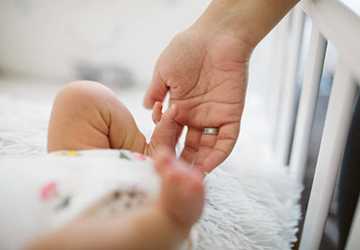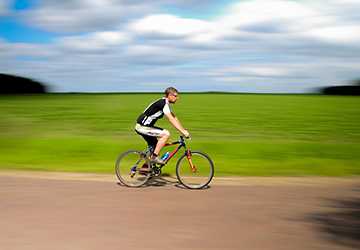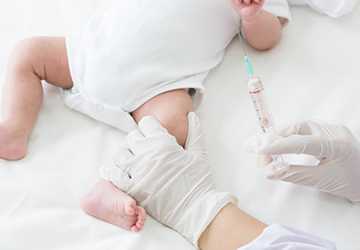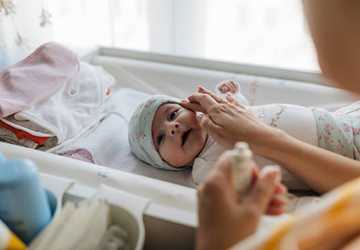Top 10 Infant Reflexes and What They Mean
Welcoming a newborn into the world is a joyful event filled with countless moments of wonder and discovery. As a parent, guardian or caregiver, understanding your child's behaviour and development is vital to ensuring their health and well-being. One fascinating aspect of early neonatal development is the presence of reflexes. These automatic, instinctive responses are essential in the first stages of a baby's life. In this article, we'll explore the top ten reflexes of babies, their importance, and how they help babies adapt to the world around them.

1. Root reflex
The seeking reflex is one of the earliest and most essential reflexes in babies. It is an extraordinary instinct that helps newborns find food. When the cheek or corner of the mouth is gently touched, the baby will instinctively turn his head and open his mouth to look for food sources. This reflex plays a vital role in successful breastfeeding or bottle feeding as it ensures the child can easily find and hold the mother's breast or bottle. Understanding the seeking reflex is critical for caregivers as it helps meet infants' nutritional needs and promotes healthy development.
2. Moreau reflex
The Moreau reflex, also called the startle reflex, is a reaction to a baby's sudden change of position or loud noise. When a child experiences frightening sensations, they instinctively extend their arms, stretch their legs, and arch their back. This reflex is thought to be a primitive survival mechanism that helps babies cling to their caregivers and seek protection and comfort.
3. Grasp reflex
The Moreau reflex, often called the startle reflex, is a mandatory innate response in newborns. This reflex is triggered by sudden changes in the baby's position or unexpected loud noises. When a baby is frightened, he will dramatically stretch his arms, spread his fingers, arch his back, and sometimes even cry. The Moro reflex is thought to be a primitive survival mechanism that helps babies cling to their caregivers for protection and comfort during moments of surprise, creating a direct and intuitive connection between child and caregiver.
4. Babinski reflection
The Babinski reflex is a unique but crucial reaction common in newborns. When a baby's soles are gently stroked, the toes fan out, and the big toe moves upward. This reflex, first described by neuroscientist Joseph Babinski, indicates a baby's neurological development. Although the Babinski reflex may seem confusing, it provides valuable insights into the maturation of the nervous system. It is a standard part of a pediatric exam and helps medical professionals monitor the baby's neurological progress and health.
5. Palm grasp reflex
The palmar grasp reflex is a fascinating early response in newborns involving the baby's hands. When a finger or object is placed in a baby's palm, he instinctively wraps his fingers around it, creating a surprisingly tight grip. This reflex is a precursor to developing fine motor skills and is critical for early interactions, such as holding a caregiver's finger or grasping an object within their reach. As the baby's hand muscles gradually strengthen and the nervous system matures, this reflex paves the way for more complex hand movements.

6. Tonic neck reflex
The tonic neck reflex, also known as the "fencing posture," is a striking response that babies display when they turn their heads to one side. When your baby's head points in one direction, he will instinctively extend the arm on that side and flex the arm on the other side. This reflex helps develop hand-eye coordination and provides the foundation for more complex motor skills. It shows the early stages of a baby's ability to adapt to and interact with their environment, a critical step in their motor development.
7. Footstep reflex
The stepping reflex is a striking response when a newborn is held upright, and his feet touch a solid surface. This reflection triggers a surprising yet adorable sight: the baby appears to be taking baby steps, even though it's still far from walking alone. This visceral reaction is not only adorable but also delightful. It also serves an essential purpose. The stepping reflex is vital in strengthening your baby's leg muscles and promoting early coordination. It sets the stage for complex walking abilities to develop over the coming months.
8. Sucking reflex
The sucking reflex is a basic instinct of newborns and plays a vital role in their early survival and nutrition. When an object or nipple is inserted into a baby's mouth, they react instinctively and trigger a rhythmic sucking motion. This reflex ensures babies can breastfeed or bottle feed effectively, giving them the essential nutrients they need to grow. In addition to being food, it is also a source of comfort. Because babies often find comfort in soothing sucking, it is a critical factor in early bonding and happiness.
9. Palm reflex
Often overshadowed by more familiar responses in infants, the palm reflex is a fascinating response that occurs when a baby's palm is stimulated. In this unique reflex, babies respond by opening their mouths, sticking out their tongues, and sometimes even making faces. This seemingly subtle reflex, often associated with the development of facial muscles and oral motor skills, is crucial for babies to master a variety of facial expressions and facilitate communication, making it a fascinating aspect of early human development.
10. Asymmetric tonic neck reflex (ATNR)
The asymmetric tonic neck reflex (ATNR) is a striking response that infants exhibit when their heads turn to one side. In this situation, the baby will instinctively extend the arm on the side toward which the head is facing and flex the arm on the opposite side. This fascinating reflex is closely related to the development of hand-eye coordination. It is a precursor to more complex motor skills, including crawling. ATNR uniquely creates the conditions for infants to transition from spontaneous reactions to conscious movement and exploration of the environment.
Diploma
The world of a newborn is full of extraordinary discoveries, and understanding your baby's reactions is an essential part of the journey. These automatic responses, such as the search reflex for eating, the Moro reflex for finding shelter, and the palmar grasp reflex for early motor development, play a crucial role in the baby's growth and environmental adaptation. As a parent, caregiver, or guardian, recognizing these reflexes and their importance can help you better understand your baby's needs and developmental progress. Although many of these reflexes weaken as children age, their importance in the early stages of life is undeniable.
Although reflexes diminish throughout childhood, their importance in the early stages of life is undeniable.




















